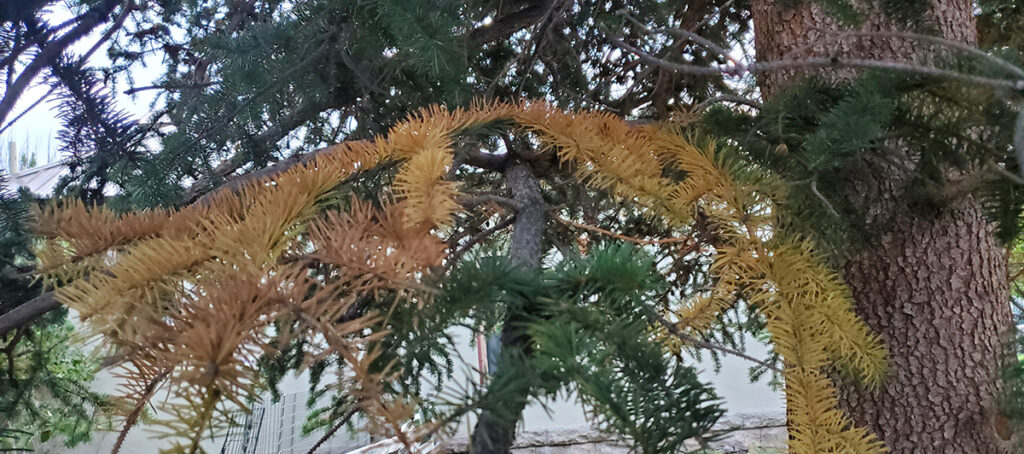
Thousands of evergreen trees in Colorado’s high country, foothills and communities are beginning to display fading yellow or brown needles, leaving many Colorado residents to wonder if their trees are sick. CSFS foresters have been receiving many phone calls about these changing needles. But the news is good: Most trees are simply going through a natural shedding process. They’re NOT being damaged by bark beetles or any specific tree insect or disease.
Colorado evergreens shed their older, interior needles as part of an annual growth cycle. Needles on the lower portions of the crown or closest to the trunk are most commonly shed, but trees stressed due to drought or root damage may shed more needles to keep the tree in balance with its root system. Soon-to-be-shed needles typically yellow first; then, they turn a reddish-orange or brown color before dropping off. Trees can have varying levels of needle shed, even within the same property or general area.
In Colorado, ponderosa and lodgepole pines, as well as some spruce and fir species, are the trees that are most commonly reported to be shedding needles in September and October. But this year has been a little different. Foresters and residents alike have noticed that spruce trees are exhibiting more browning of inner needles than usual. The CSFS’ entomologist, Dr. Dan West, says that in spruce trees the fall need drop often comes 3-4 years after a stressful or drought year.
Signs of bark beetle infestation
Evergreen trees that shed fall needles have a different appearance than trees infested by bark beetles. The needles on a beetle-infested tree typically change color throughout the entire tree (as opposed to only the older needles in healthy trees), initially starting with an off-shade of green and turning to reddish-orange by the following summer. In addition to changing needle color, bark beetle-infested trees will show other signs of attack:
- popcorn-shaped pitch tubes on the trunk
- boring dust resembling fine sawdust collecting in bark crevices and at the base of the tree
- regular woodpecker activity
This fall needle drop is frequently mislabeled as “needle cast,” but that term actually refers to a fungal disease of spruce and fir trees. There is no need to spray or otherwise chemically treat pines and other evergreens exhibiting normal fall needle drop.
For more information about tree and forest health, contact your local CSFS field office or visit csfs.colostate.edu/forest-management/.

